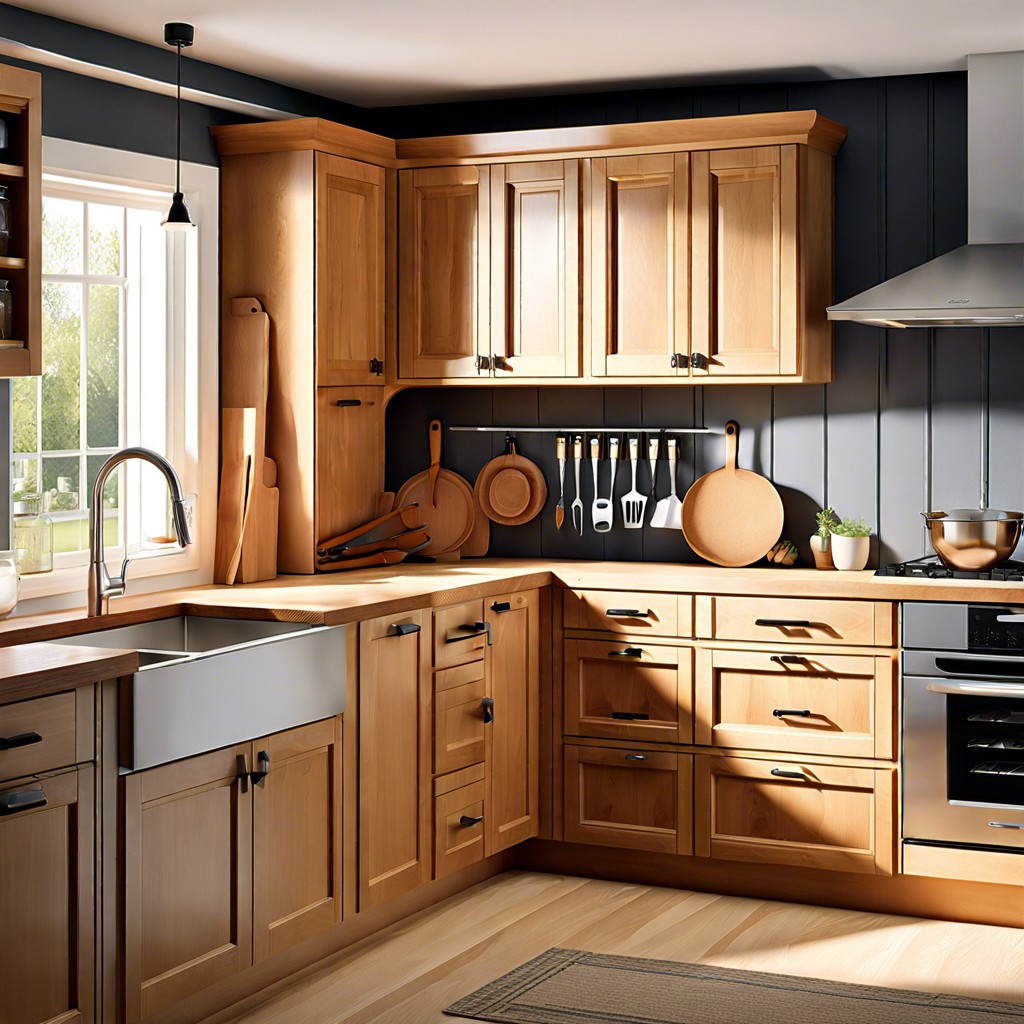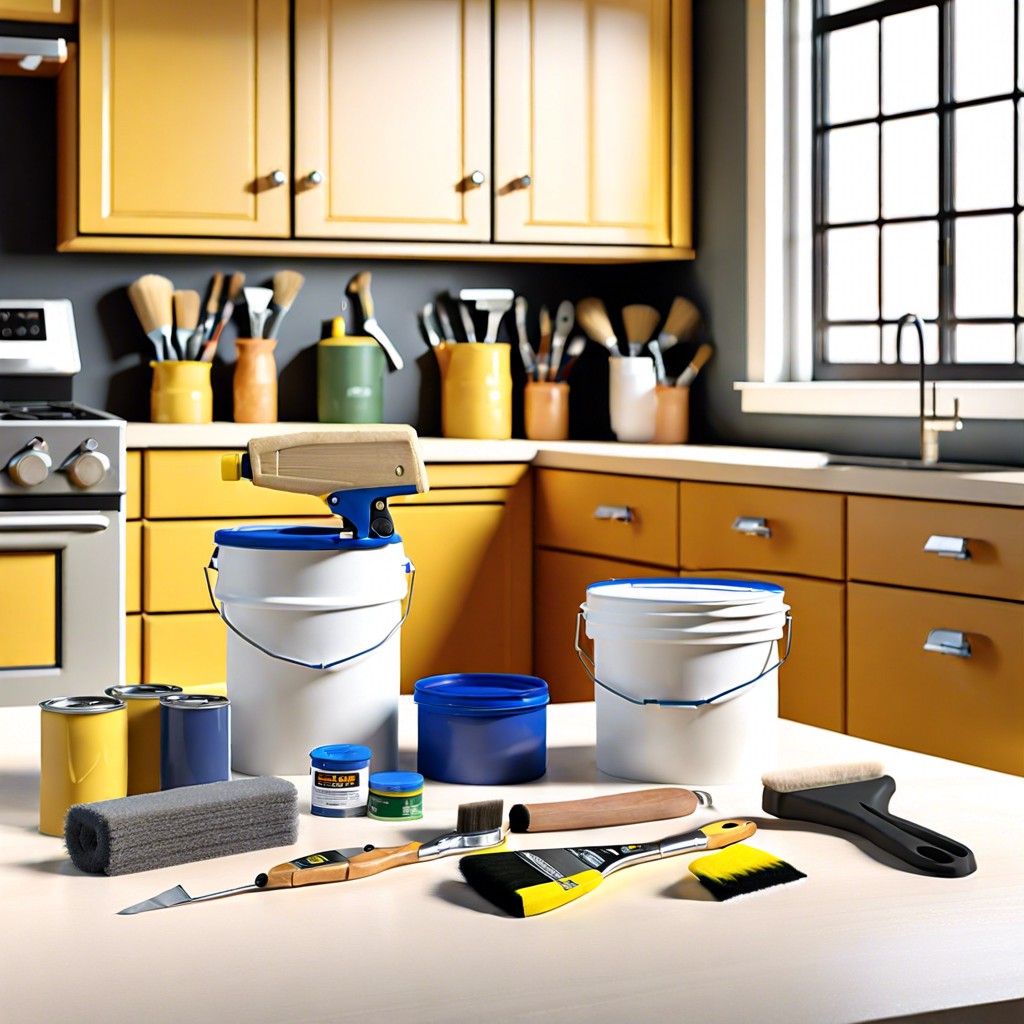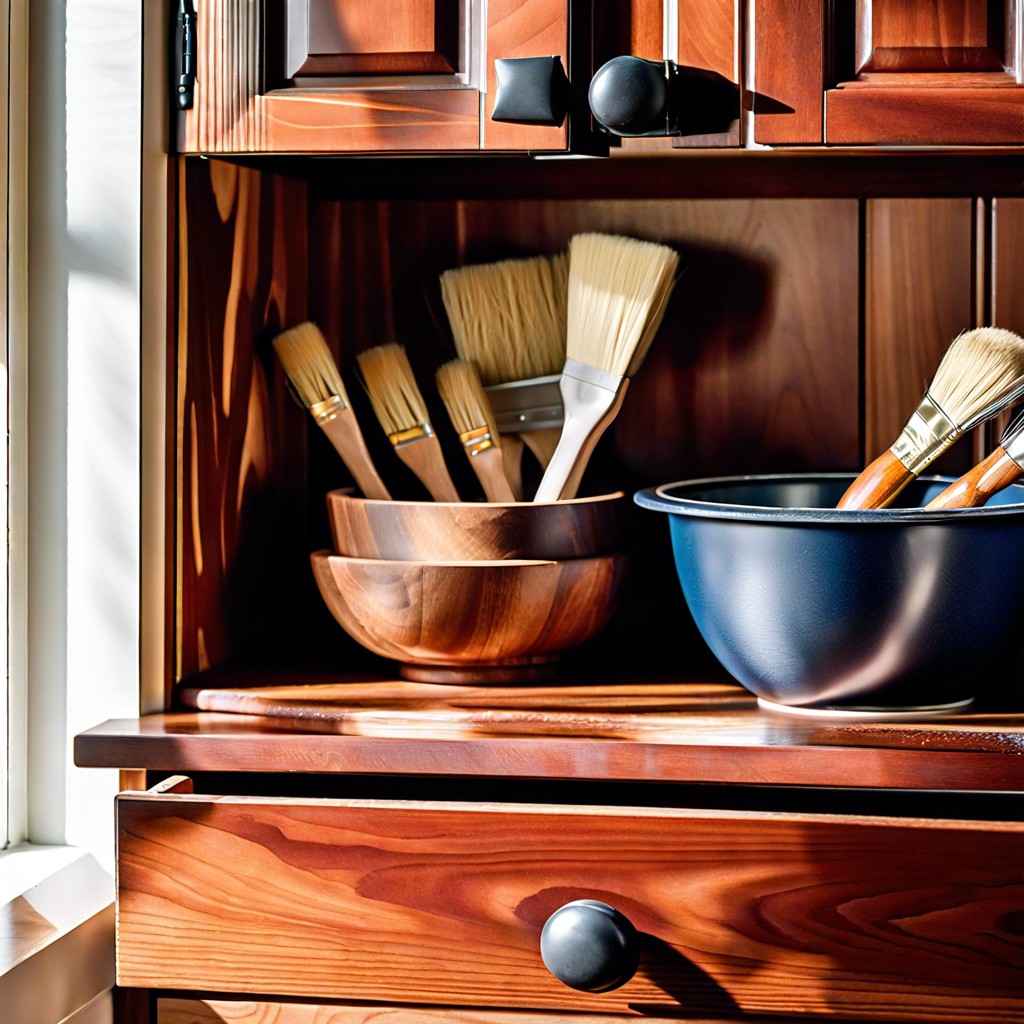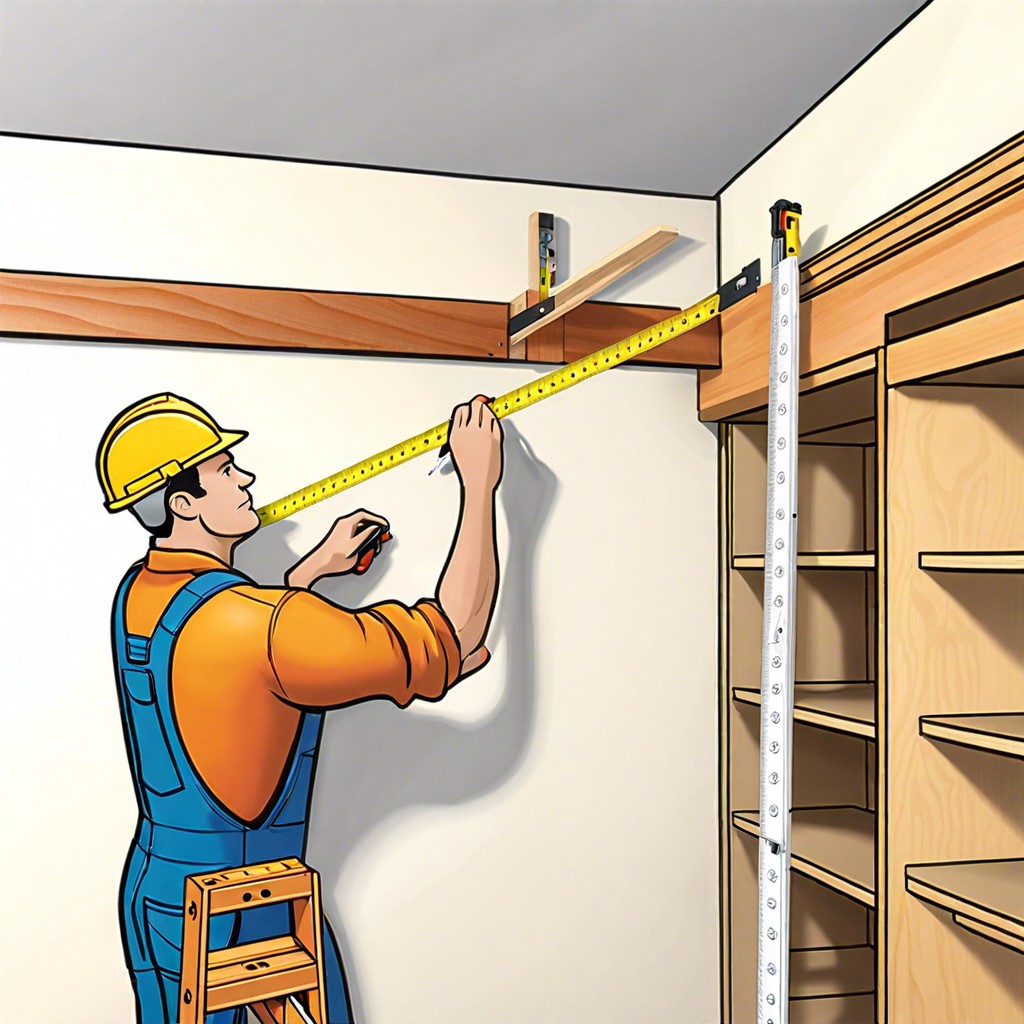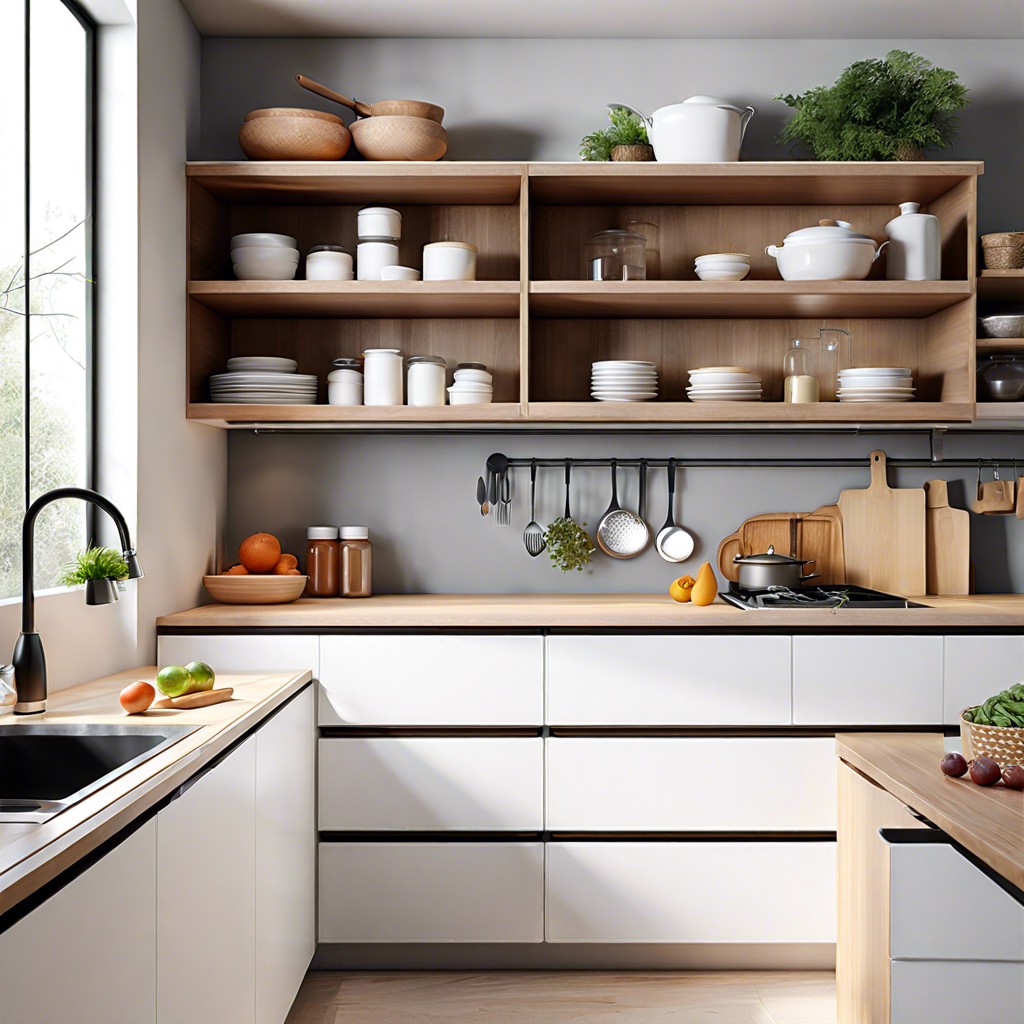Last updated on
Find out why Italian cabinetry stands unparalleled in the world of fine woodworking because of its legacy, sophisticated style, and top-tier manufacturers.
Key takeaways:
- Italian cabinetry is known for its attention to detail and craftsmanship.
- Key features include sleek lines, high-quality hardware, and luxurious finishes.
- Italian cabinetry utilizes high-quality materials like wood, MDF, and glass.
- The design trends in Italian cabinetry focus on minimalism and smart storage solutions.
- Italian cabinetry manufacturers like Snaidero and Scavolini offer exceptional quality and innovative designs.
What's Inside
Italian Cabinetry Craftsmanship
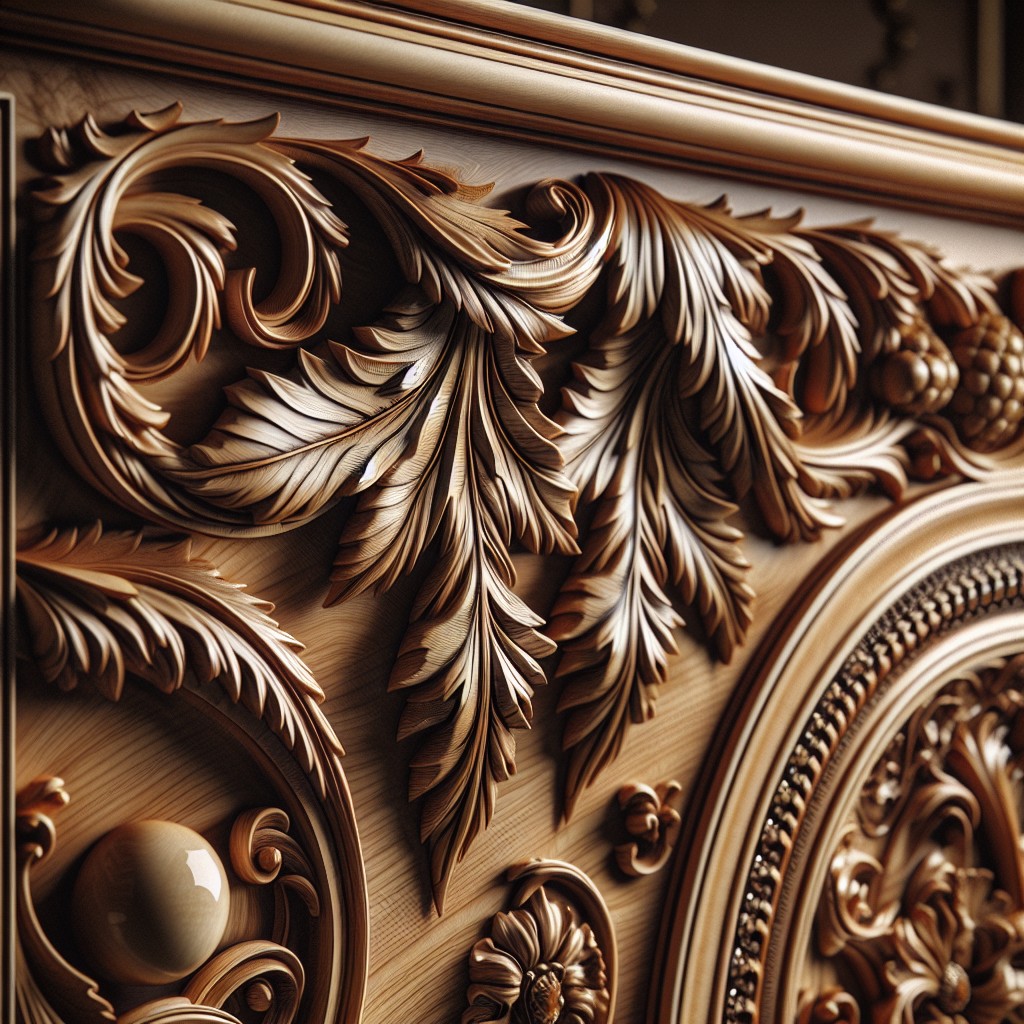
Attention to detail reigns supreme in the world of Italian cabinet-making. Skilled artisans devote countless hours to perfecting every hinge, handle, and surface. This results in furniture pieces that aren’t just storage solutions but works of art.
It starts with a robust apprenticeship system, ensuring skills passed down through generations imbue each piece with a rich heritage. These craftsmen combine time-honored techniques with precision engineering, yielding cabinetry that lasts for decades, not just years.
The joinery methods are exemplary, utilizing dovetail and mortise-and-tenon techniques that ensure strength and durability. Every piece fits together seamlessly, a testament to the meticulous nature of the craft. In addition, the finish on Italian cabinets is unparalleled; multiple layers of lacquer or hand-rubbed stains enhance the wood’s natural beauty and provide lasting protection.
The hallmark of Italian cabinetry craftsmanship is customization. Artisans work closely with clients to tailor each piece to specific preferences, offering a personal touch that mass-produced options can’t match. This collaborative process promises a unique and personal final product, showcasing not just skill but also the creativity inherent in Italian design.
Key Features of Italian Cabinetry
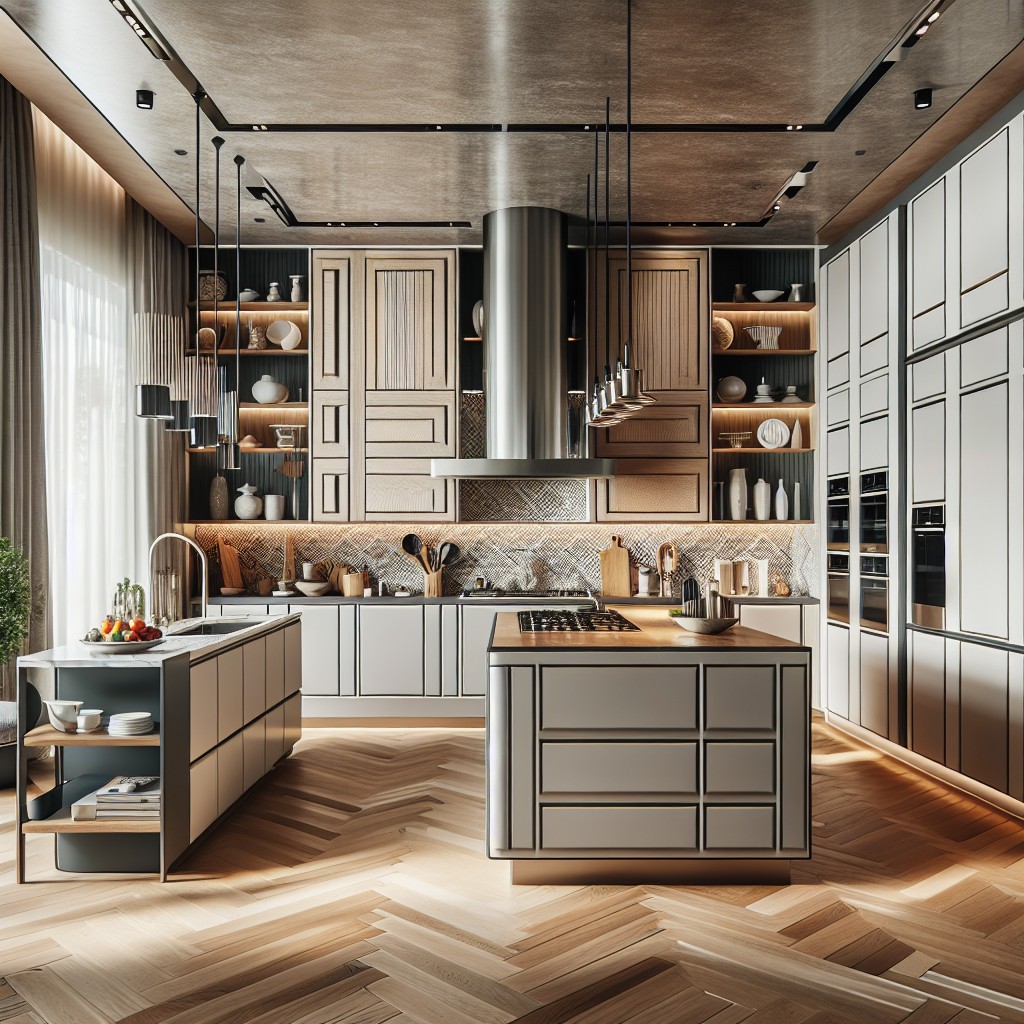
Italian cabinetry is revered for its artisanal precision and aesthetic finesse, which are apparent in several distinctive aspects.
- Sleek, Contemporary Lines: Expect minimalism and sophisticated designs that boast clean lines and smooth surfaces, often uninterrupted by excessive detailing or hardware.
- High-Quality Hardware: Hinges, drawer slides, and handles are engineered for durability, offering a seamless operation that matches the cabinetry’s elegance.
- Luxurious Finishes: Whether it’s rich, lacquered woods or high-gloss paints, the finishes are impeccable, providing depth and luster that elevate the look of any kitchen.
- Modular Systems: Flexibility is key; units are designed to be versatile, allowing for a customized fit for every space, blending functionality with style.
- Exceptional Craftsmanship: The attention to detail, from the joinery to the final touches, reflects a centuries-old tradition of Italian craftsmanship.
- Innovative Storage Solutions: Internal storage options are plentiful and ingeniously designed to maximize space and improve organization within the cabinets.
These qualities unite to create not just a functional storage solution but a centerpiece of home design that radiates sophistication and craftsmanship.
Materials Used in Italian Cabinetry
High-quality woods such as oak, walnut, and cherry are staple choices for their durability and timeless appeal. Exotic woods might also make a cameo for a touch of luxury. Veneers are not left out; they offer variety and can be more cost-effective while still exuding elegance.
Italian cabinetry also embraces modern materials like medium-density fiberboard (MDF), known for its strength and moisture resistance, making it suitable for kitchen environments. Glass elements are incorporated for a sleek touch, often frosted or etched with designs.
Lacquer finishes have a significant role due to their lustrous shine and vast color options – they’re a testament to the Italian flair for style. Stainless steel is an evergreen choice in modern Italian designs, appreciated for its hygienic qualities and industrial-chic look.
Lastly, natural stones like marble or quartz are often used for countertops, complementing the cabinetry and adding sophistication. The use of these materials showcases the Italian commitment to quality, aesthetics, and functionality.
Italian Cabinetry Design Trends
Exploring the latest trends, minimalist aesthetics are taking center stage, with clean lines and uncluttered spaces defining contemporary layouts. Functionality merges with beauty, as push-to-open cabinet doors and handleless designs promote a sleek look. High-gloss finishes are fading in popularity, making way for matte and textured surfaces that provide a tactile experience and conceal fingerprints and smudges.
Color choices have shifted, with a predilection for neutral palettes that evoke calmness and simplicity. However, bold hues occasionally punctuate these tranquil bases, serving as statement pieces or focal points. Mixed materials are also in vogue; cabinetry often combines wood with metal or glass, creating intriguing contrasts and a layered aesthetic.
Smart storage solutions, including deep drawers and corner cabinet pullouts, enhance space utilization, addressing the need for efficient organization without compromising on elegance. Integration of appliances within cabinetry contributes to a harmonious and uninterrupted visual flow, as seen with refrigerator and dishwasher fronts that match the surrounding cabinetry.
Finally, there’s a nod to tradition with a modern twist, as classical motifs are reinterpreted. This is evident in subtly detailed door profiles and heritage colors that are rejuvenated with current design sensibilities, offering a timeless yet updated charm.
Innovation in Italian Cabinetry
In the realm of cabinetry, Italian designers are leading the charge in innovative practices that blend form and function. At the forefront are smart storage solutions that maximize space and accessibility. Think of corner cabinet systems that transform hard-to-reach spaces into fully usable drawers or advanced pull-out columns that bring everything into view with a gentle tug.
Customization options are virtually limitless, offering homeowners the ability to tailor every aspect, from the interior layout to the handle finishes. Italian innovators haven’t stopped there; they’re integrating cutting-edge technology into their designs. LED lighting systems that illuminate your cabinet contents and touch-to-open mechanisms that provide a sleek, handleless façade are breaking the mold in kitchen functionality.
On the environmental front, eco-conscious materials such as recycled wood and non-toxic lacquers show Italy’s commitment to sustainable innovation. These materials are crafted with the same attention to aesthetics and durability, ensuring a reduced environmental footprint without sacrificing quality or design.
Augmented reality (AR) applications are another leap forward, allowing you to visualize your new Italian cabinetry within your home before the installation process begins. This not only enhances the customer experience but streamlines the design process, ensuring every detail aligns with your vision for the space.
Italian cabinetry is not just furniture; it’s a reflection of a culture that values thoughtful design, technological integration, and sustainable practices. Whether you’re a tech enthusiast or eco-warrior, there’s something in the Italian cabinetry innovation that will resonate and elevate your living space.
Sustainability Practices in Italian Cabinetry Manufacture
Italian cabinetry is poised at the intersection of tradition and forward-thinking, particularly in its sustainable manufacturing practices. Embracing eco-friendly materials is a cornerstone of this philosophy. Manufacturers often opt for woods from responsibly managed forests, ensuring a minimal environmental footprint. Additionally, the use of non-toxic adhesives and varnishes preserves indoor air quality while maintaining the longevity and beauty of the cabinets.
Recycling plays a pivotal role in Italian cabinetry production. From utilizing recycled wood fibers to integrating repurposed hardware, these practices underscore a commitment to reducing waste. Energy conservation also commands attention, with many facilities harnessing renewable energy sources, such as solar power, to fuel their operations.
Through life cycle assessment, manufacturers analyze the environmental impact from the production to the disposal of cabinetry, aiming to minimize the ecological impact at each step. This comprehensive approach demonstrates how Italian cabinetry not only captures the essence of style but also the spirit of ecological responsibility.
Italian Vs. Other European Cabinetry
Comparing Italian cabinetry to its European counterparts offers a unique lens through which to appreciate the region-specific nuances in design and construction. German cabinets are often recognized for their precision engineering and modernist aesthetic, emphasizing functionality and minimalism. Scandinavian designs lean towards simplicity and eco-friendliness, marked by light woods and a penchant for natural, understated beauty.
On the other hand, Spanish and French cabinetry might showcase more traditional and ornate styles, with an emphasis on the artistry and history influencing their designs. French styles often include intricate woodwork and classic finishes, whereas Spanish designs might feature bold colors and rustic elements.
In contrast, Italian cabinetry is distinguished by its sophisticated designs that marry tradition with innovation. Luxurious materials are characteristic of Italian designs, as are the artful incorporation of trends and the seamless blend of form and function. The hallmark of Italian cabinet making is its artisanal approach to craftsmanship, utilizing the expertise passed down through generations to achieve a blend of high-end aesthetics and cutting-edge design.
Consider the following points when exploring the differences between Italian and other European cabinetry:
- Design Philosophy: Italian cabinetry often exemplifies a daring approach to design that pushes boundaries yet maintains elegance.
- Material Selection: The choice of materials in Italian designs frequently includes premium woods, high-gloss finishes, and innovative composites.
- Craftsmanship: An emphasis on handcrafted details sets Italian cabinets apart, showcasing the value of artisanal skill.
- Innovation: Italian manufacturers are leaders in integrating technology with functionality, presenting cabinetry solutions that are as tech-savvy as they are stylish.
Understanding these contrasts helps in making an informed decision when considering cabinetry for your home that aligns with your personal style and the functionalities you value.
Top Italian Kitchen Cabinets Manufacturers
When exploring the world of Italian kitchen cabinets, a few manufacturers stand out for their exceptional quality and innovative designs. Here are some top players:
1. Snaidero specializes in luxury modern kitchens, offering a blend of functionality and elegance. Their signature lies in collaboration with renowned designers to create trendsetting spaces.
2. Scavolini sets the bar high for variety and customization, ensuring that there’s a style for every preference. Whether the focus is on contemporary sleekness or traditional charm, their cabinets are adaptable to various home aesthetics.
3. Poliform’s commitment to minimalist design and meticulous attention to detail results in kitchens that exude a sense of sophistication and harmony.
4. Aran Cucine prides itself on producing cabinets that combine technological innovation with artisan craftsmanship—a perfect match for those who appreciate modernity yet desire the warmth of traditional Italian artisanship.
5. Lastly, Valcucine is dedicated to pushing the envelope in sustainability and ergonomic design. With their finger on the pulse of eco-friendly practices, they create kitchens designed to minimize waste and maximize user comfort.
Each of these manufacturers brings a unique flavor to Italian kitchen cabinetry, making it possible for homeowners to find the perfect match for their home’s character and their culinary lifestyle.
Selecting Quality Italian Cabinetry
When choosing Italian cabinetry, prioritize craftsmanship and detail. Look for indicators of skilled workmanship like seamless joints and perfect finishes. Inspect door fronts and hardware for quality; solid materials and precision in movement suggest durability. Always request samples to touch and feel the materials, ensuring they meet your expectations.
Consider customization options, as the best Italian cabinets are often made to order. Check if the manufacturer can tailor dimensions, colors, and features to your specific needs. Finally, inquire about the cabinet’s construction. Well-constructed units often feature robust structures, such as full-back panels and reinforced corners, ensuring your cabinetry withstands the test of time and usage.
Integration of Technology in Italian Cabinetry
Embracing the future, Italian cabinetry has seamlessly woven state-of-the-art technology into its designs to enhance functionality. Here are a few ways technology is elevating Italian cabinetry:
- Soft-Close Mechanisms: No more slamming drawers; enjoy the gentle, automatic closure of cabinets with a soft touch.
- Integrated Lighting Solutions: LED strips and spotlights built into shelves and underneath cabinetry improve visibility and add ambiance.
- Touch-to-Open Systems: Minimalistic design meets convenience; a gentle push is all it takes to access your storage.
- Smart Storage Solutions: Advanced organizers that retract and extend, maximizing space and providing ease of access.
- App-Controlled Features: Manage cabinet functions such as lighting and motorized elements from your smartphone or device.
- Hidden Charging Stations: Keep countertops clear with concealed docks and charging ports for devices tucked away inside drawers.
These integrations are not just about convenience; they reflect a commitment to ergonomic design, ensuring every interaction with Italian cabinetry is both simple and satisfying.
Italian Cabinetry for Different Home Spaces
While often associated with luxury kitchens, the appeal of Italian cabinetry extends well beyond the culinary space. The meticulous detail and sleek design applied to kitchen cabinets are equally transformative in bathrooms, living rooms, and even home offices.
In the bathroom, Italian vanity units can create a spa-like ambiance, marrying functional storage with elegant lines. Soft-close drawers and compartments tailored for toiletries exemplify the fusion of form and function.
Within living spaces, the modular nature of Italian systems offers flexibility, adapting to various layouts and aesthetic preferences. Entertainment centers and bookcases, with a range of finishes and hues, can be configured to hold multimedia devices as well as cherished collectibles, using space efficiently and adding an air of sophistication.
Home offices benefit from Italian cabinetry through bespoke shelving and desk units. The emphasis on ergonomics ensures a comfortable working environment, while sleek designs foster an atmosphere of professionalism and creativity. These pieces not only offer practical solutions for storage and organization but do so with an undeniably chic and contemporary flair.
The adaptability of Italian cabinetry to different home spaces lies in its customizability, ensuring that each installation is as unique as the home it graces.
Maintenance and Care for Italian Cabinetry
To keep your Italian cabinets looking as stunning as the day they were installed, regular maintenance is key. Start with gentle cleaning – a damp cloth and mild detergent should suffice to wipe away everyday grime. For tougher spots, avoid abrasive cleaners that can damage the finish; instead, opt for a solution formulated for your cabinet’s specific material.
Wooden cabinets benefit from occasional polishing to enhance their natural luster, but be mindful of the polish type; silicone-free is preferable to avoid buildup. And, while the hardware might seem like small details, ensure it’s kept tight – loose knobs or pulls can lead to improper door function and potential damage.
Keep cabinets dry, especially in areas prone to moisture like under the sink. Immediate drying after spills prevents water damage and warping. Lastly, don’t underestimate the impact of direct sunlight; it can discolor your cabinetry over time. Employ window treatments to mitigate prolonged exposure, preserving the vibrant hues and patterns that give Italian cabinetry its charm.
Cost Consideration for Italian Cabinetry
Understanding the pricing of Italian cabinetry is essential for making an informed decision when investing in high-quality kitchen design. The cost can be influenced by several factors:
- Material Quality: The types of wood, metal, and other materials used can significantly affect the overall price.
- Craftsmanship: Handcrafted details and custom designs are hallmarks of Italian cabinetry but also contribute to a higher price point.
- Import Fees: As Italian cabinetry is often imported, customs and shipping fees can add to the total cost.
- Brand Reputation: Well-known Italian brands may command premium prices due to their established reputation for quality and durability.
- Customization Level: The more customized the cabinetry, the higher the cost, reflecting the time and skill required to tailor each piece to individual specifications.
- Installation Complexity: Professional installation can vary in price, especially for intricate designs or those that require specific installation techniques unique to Italian cabinetry.
When budgeting for Italian cabinetry, balance your desire for luxury and aesthetics with practical considerations such as longevity and functionality to ensure the investment is well-aligned with your overall home design goals.
Planning Your Kitchen: Designing a Better Kitchen Island
When embarking on the creation of a kitchen island, consider the shape and size that best fit your space. A well-proportioned island can enhance movement and workflow, supporting the ‘kitchen triangle’ concept that connects the sink, stove, and refrigerator. Opt for added functionality with built-in drawers or cabinets, and choose a countertop material that complements your Italian cabinetry and meets the demands of daily use.
Explore options for under-counter appliances, such as wine coolers or dishwashers, to maximize efficiency. If entertaining is a priority, integrate seating options and ensure adequate space for guests without obstructing the chef’s work area. Lighting is another crucial element; select fixtures that provide both task and ambient light, enhancing the island’s aesthetics and functionality.
Italian Kitchen Design Projects
Embarking on an Italian kitchen design project means merging functionality with style. The emphasis is on creating a space that’s both a culinary workshop and a social hub.
Here are some key concepts to consider:
- Harmony and Flow: Every element should coexist in visual harmony, from the stone counters to the sleek cabinetry lines. The layout should promote an easy flow of traffic, making cooking and socializing seamless.
- Minimalism: Less is more in Italian design. Choose a few standout pieces that make a statement rather than over-cluttering.
- Personality Touches: Incorporate unique accessories or color splashes that reflect your personal style without overpowering the minimalist aesthetic.
- Natural Light: Ensure the kitchen space has ample light, preferably natural, enhancing the materials’ beauty and promoting a warm, welcoming atmosphere.
- Smart Storage: Innovative storage solutions keep countertops clutter-free and create a sense of order and space.
- Ergonomics: The kitchen should be customized to suit your height and movement to make cooking a comfortable experience.
Remember, a well-executed Italian kitchen design project isn’t just about appearance—it’s about crafting a space that inspires and invigorates your culinary adventures.
FAQ
What are Italian cabinets?
Italian cabinets are modern kitchen fixtures known for their sleek design, superior hardware, and features such as soft-close hinges, pull-out drawers, and integrated lighting that simplify storage and enhance the cooking or entertaining experience.
How much do Italian cabinets cost?
The cost of Italian kitchen cabinets typically ranges from $30,000 to $100,000, although this can vary based on factors such as kitchen size, material, and the selected brand.
What are European style cabinets?
European style cabinets are characterized by their clean lines, minimal hardware, and focus on quality materials and construction, resulting in a sleek, modern aesthetic ideal for contemporary homes.
What does a typical kitchen look like in Italy?
A typical Italian kitchen features a rustic design style with natural wood finishes, stone or tile flooring, exposed ceiling beams, and wrought iron fixtures, embodying a welcoming and comfortable ambiance.
How is the quality and durability of Italian cabinets compared to other types?
Italian cabinets are usually of superior quality and durability, thanks to their traditional craftsmanship and high-grade materials, compared to cabinets from other regions.
What makes the design of Italian cabinets unique and desirable?
Italian cabinets are highly admired for their unique blend of modern design, exquisite craftsmanship, and innovative functionality, making them opulent pieces of furniture and kitchenware.
How can you identify authentic Italian cabinetry from imitations?
Authentic Italian cabinetry can be identified by the high quality of its materials, such as solid, heavy, and intricately detailed wood, its technical craftsmanship revealed in seamless joints and perfect finishes, the characteristic Italian design aesthetics, often with an emphasis on minimalist, modern lines or classical curves, and premium fittings and hardware.
